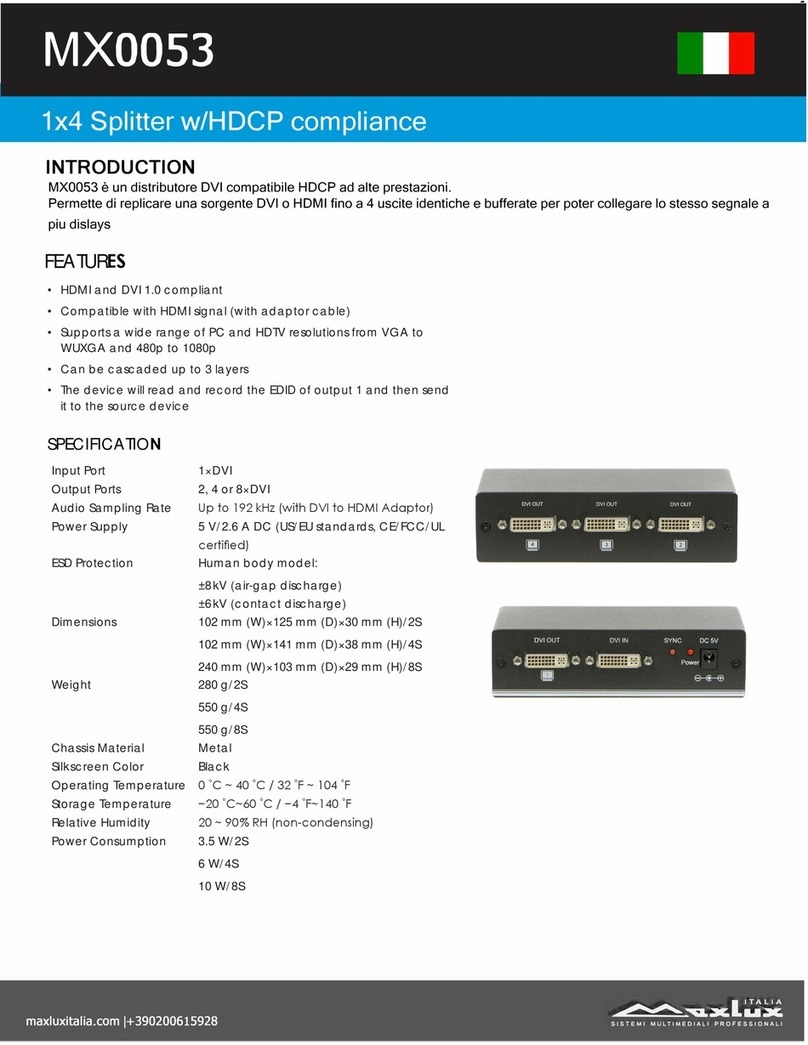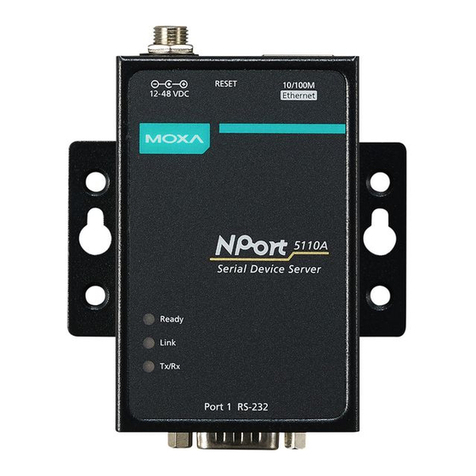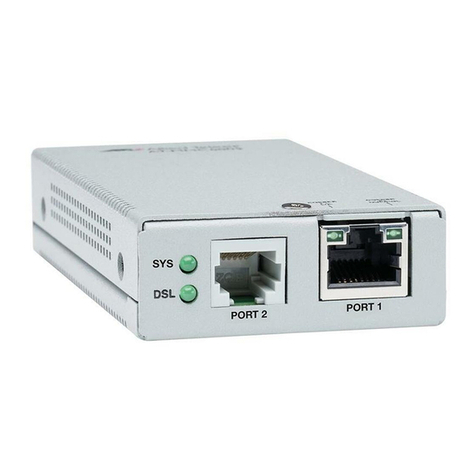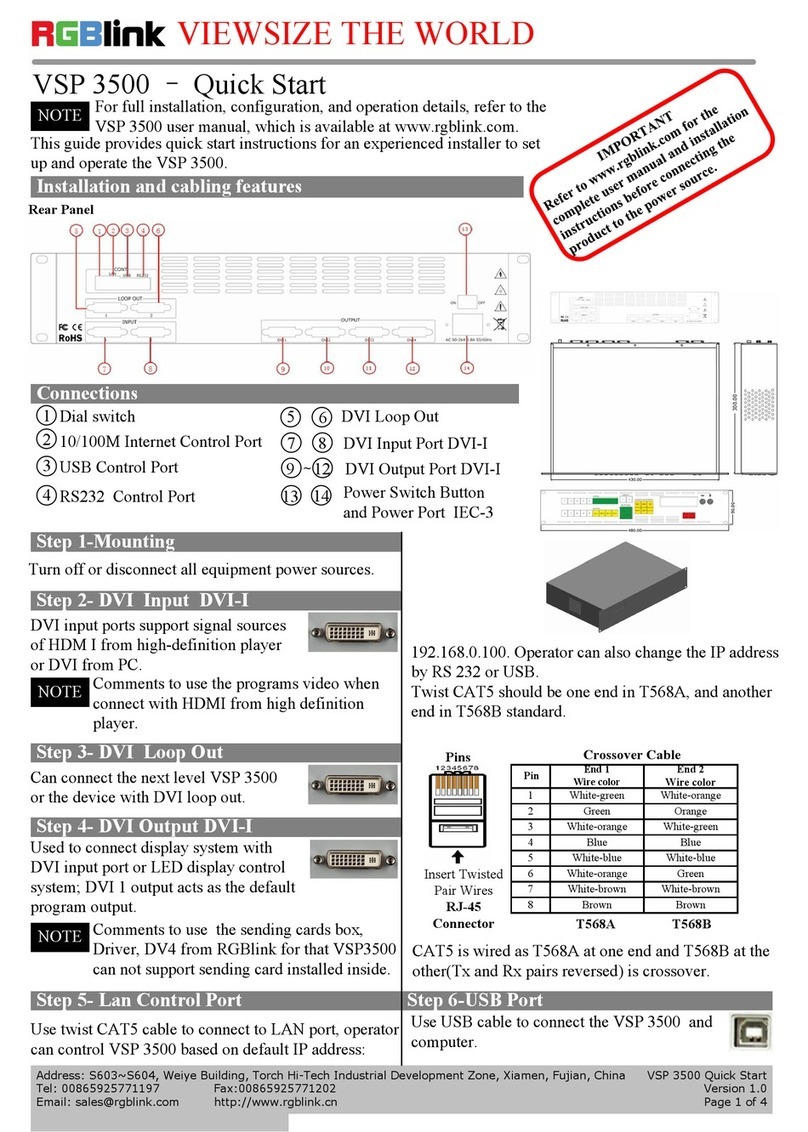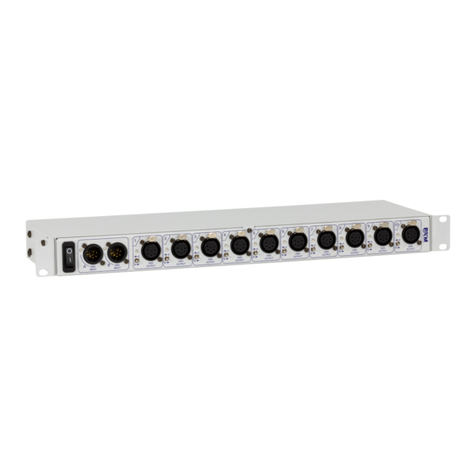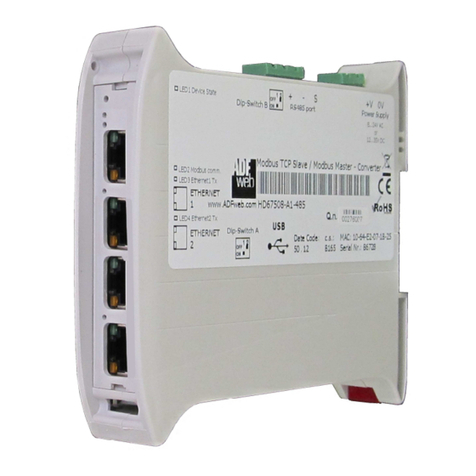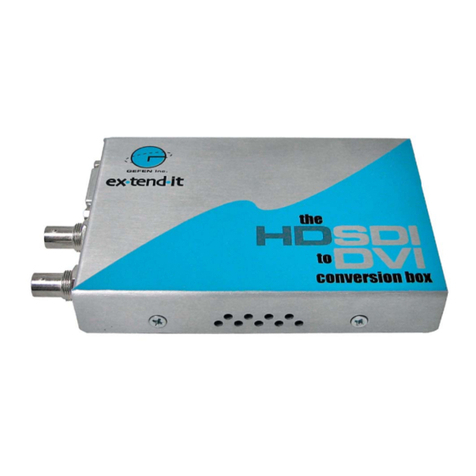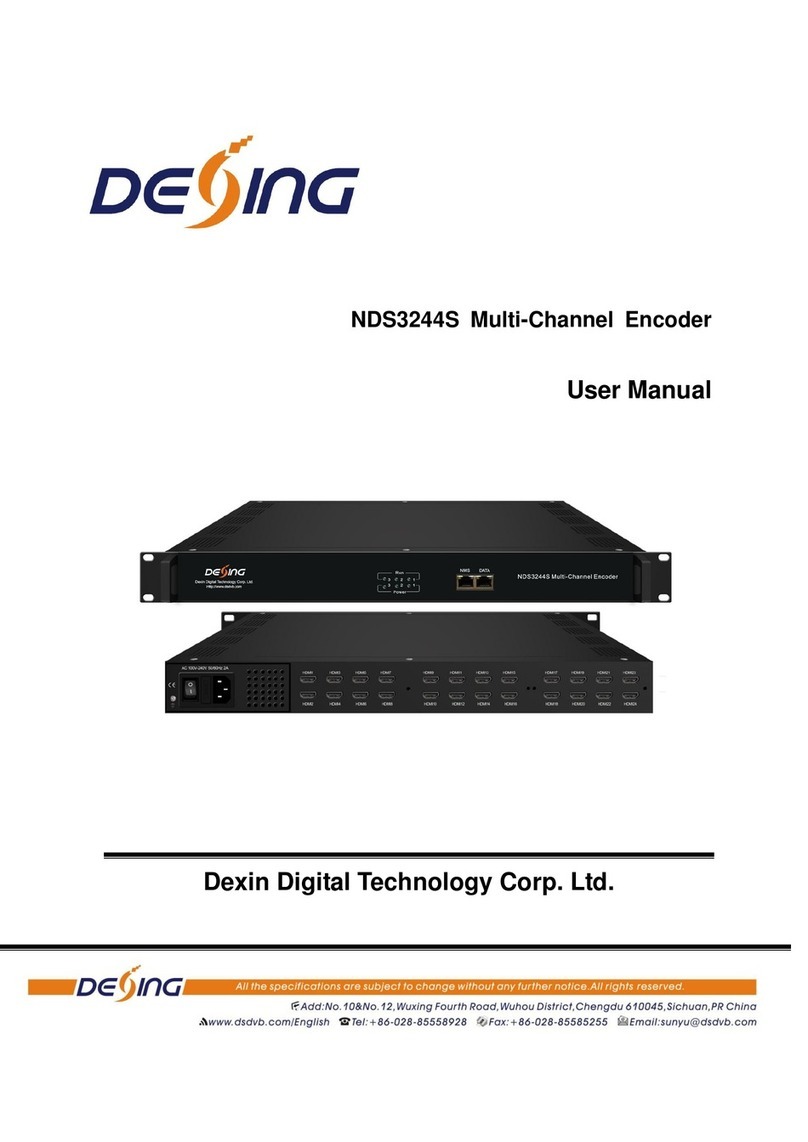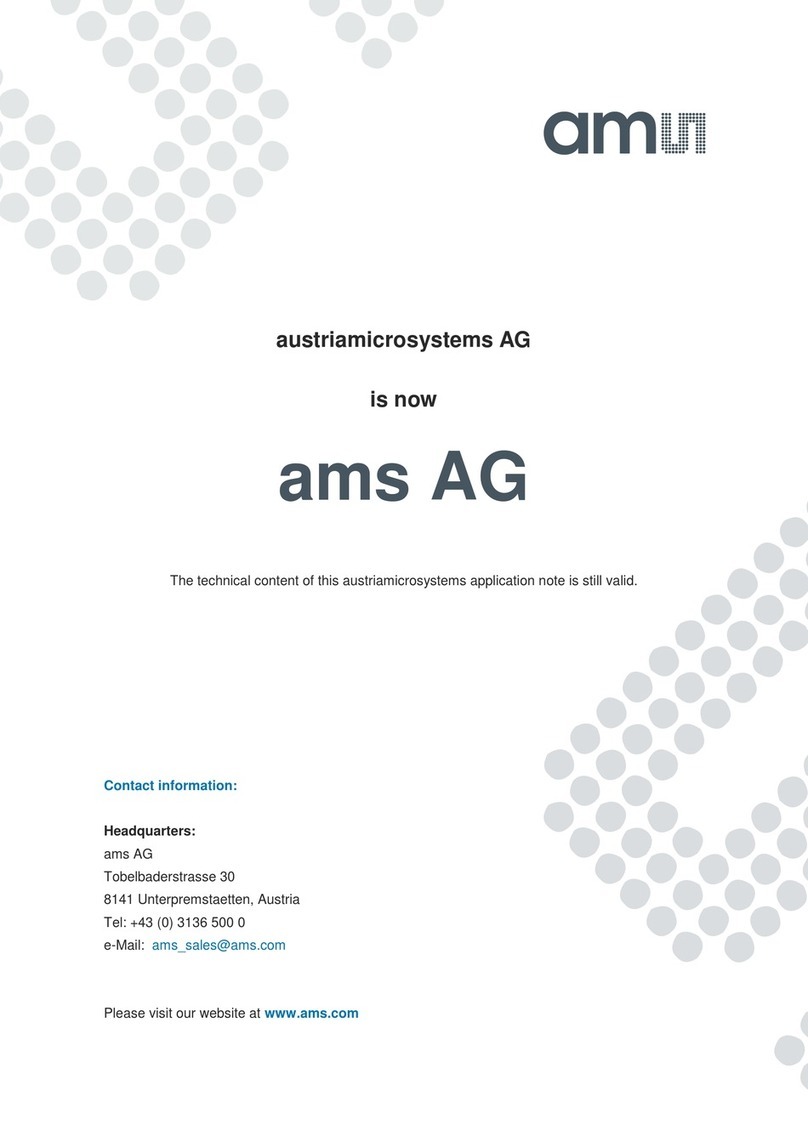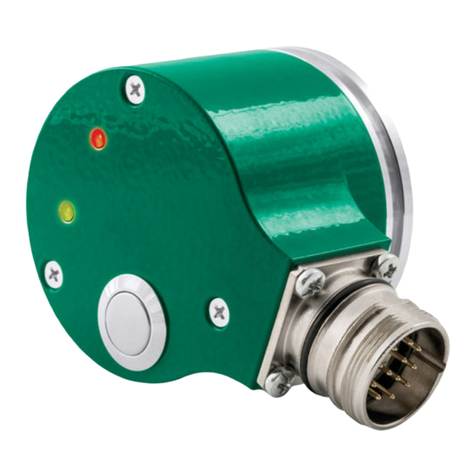sparkfun Qwiic Twist Technical document

What does that mean? Send the command twist.getCount() and you’ll get the number of steps the user has
twisted the knob. For example, 312 or -23 depending on the direction and amount the user and turned the knob.
The Twist takes care of all the various interrupts, switches, PWM'ing of LEDs and presents all those features over
an easy-to-use I C interface. The Qwiic Twist was designed to get rid of the large mass of wires that are needed to
implement an RGB encoder in a breadboard. Now you can get encoder position with something as
twist.getCount(); and your microcontroller can keep focused on other more important tasks.
The Qwiic Twist has an indent type encoder which gives the user a great ‘clicky’ feel as they turn. The Qwiic Twist
also has an RGB LED and a built-in button. We’ve written an Arduino library to make controlling these features as
easy as:
twist.setColor(255, 0, 0); //Red
if(twist.isPressed() == true) Serial.println(“Pressed!”);
And finally, the I C address of Qwiic Twist is software configurable which means you can hookup over 100 Twists
on a single I C bus!
Required Materials
To follow along with this hookup guide, you will need one of the following Qwiic shields with an Arduino. You may
not need everything though depending on what you have. Add it to your cart, read through the guide, and adjust
the cart as necessary.
2
2
2
SparkFun RedBoard - Programmed with
Arduino
DEV-13975
SparkFun Qwiic Shield for Arduino
DEV-14352

Tip: You could also use the SparkX BlackBoard. It's basically a RedBoard with additional features. This
would reduce the amount of components and time soldering headers to the board. Keep in mind that
SparkX products are rapidly produced to bring you the most cutting edge technology as it becomes
available. SparkX products are tested but come with no guarantees. Live technical support is not available
for SparkX products.
You will also need a Qwiic cable to connect the shield to your Twist, choose a length that suits your needs. The
Qwiic to breadboard cable is good if you want to easily plug the Qwiic Twist into a 3.3V platform such as Teensy.
SparkFun BlackBoard
SPX-14669
Qwiic Cable - 100mm
PRT-14427
Qwiic Cable - Breadboard Jumper (4-pin)
PRT-14425

Tools
The Qwiic Twist is designed to be easily connected to a Qwiic bus without soldering. But if you choose to connect
to the I C pins directly you may need a soldering iron, solder, and general soldering accessories.
Suggested Reading
If you aren’t familiar with the Qwiic system, we recommend reading here for an overview.
Qwiic Cable - 500mm
PRT-14429
Qwiic Cable - 200mm
PRT-14428
Qwiic Cable - 50mm
PRT-14426
2
Solder Lead Free - 100-gram Spool
TOL-09325
Weller WLC100 Soldering Station
TOL-14228

Qwiic Connect System
We also recommend checking out these tutorials before continuing.
Additionally, we’ve got a great video on how the inner workings of encoders work and why they’re important.
Hardware Overview
The RGB encoder is a 24 indent encoder. You’ll feel 24 clicks when turning one 360 degree rotation.
I2C
An introduction to I2C, one of the main embedded
communications protocols in use today.
Qwiic Shield for Arduino & Photon Hookup
Guide
Get started with our Qwiic ecosystem with the Qwiic
shield for Arduino or Photon.
Adventures in Science: How to Use Rotary Encoders

The encoder works best with the Clear Plastic Knob but is compatible with any knob with a 6mm knurled hole. The
encoder output is filtered through a series of resistors, capacitors, and error checked in software to be sure the
accurate number of ticks is being output.
The encoder has an RGB LED built into it. To get the full light effect we recommend a clear knob but depending on
your setup you may also be able to get a ‘backlit’ effect with an opaque knob. The RGB LEDs are pulse-width-
modulated and controlled via software (and backed by non-volatile memory) so you can tell the Qwiic Twist to go
to any color you want and it will be that color now and even after the Twist is power cycled (it remembers the last
color setting).
The encoder has a built-in momentary button. This is useful for selecting menu items and getting general feedback
from the user.
Qwiic I C Pins
2

The Qwiic Twist is best used with the Qwiic system. Simply plug a Qwiic Cable into the Twist and start talking to it.
Alternatively you can solder to the I C pins on the board.
Heads Up! The Qwiic Twist is designed to operate at 3.3V so please don’t drive it at 5V. Your I C pins,
however, can be 5V logic.
RST and INT
The reset pin is an active low input. When pulled low Qwiic Twist will be held in reset.
2
2

The INT pin is active low and is open drain output. The interrupt pin will go low when any of the follow events
happen:
The user presses the button is pressed or released.
The user has turned the knob and no movement has been detected for a certain amount of time. This
amount of time is called the turnInterruptTimeout and is 250ms by default. This means that once the user
has stopped turning the knob for 250ms the interrupt will fire. This is helpful when the user is doing lots of
knob changes. The Qwiic Twist won’t fire the interrupt until the user has stopped fidgeting. The
turnInterruptTimeout is software configurable from 1ms to 65000ms (65 seconds).
The INT pin is open drain and is pulled up through a 10k resistor but if you want to connect multiple Twists and
share the interrupt pins among many Twists then you can optionally cut the jumper to remove the 10k pull up on
each Twist board.
Jumpers
The ADR jumper is normally open and controls the I C address of the device. By default the Qwiic Twist 7-bit
unshifted address is 0x3F . If the jumper is closed with solder, the address will become 0x3E .
The Twist is unique in that it can have any address assigned to it between 0x08 and 0x77. This means over 100
Twists can be connected on a single bus!
Note: If the ADR jumper is closed then Qwiic Twist will resort to address 0x3E regardless of what address may
have been configured via software commands. This is a safety mechanism in case the Twist gets set to an
unknown address.
The INT jumper is a normally closed jumper; there is a small trace connecting the two pads. This jumper connects
the INT pin on the ATtiny84 through a 10k resistor to 3.3V. Cutting the small trace disconnects the 10k resistor
from the INT pin on the ATtiny84.
2

The INT pin on Qwiic Twist is open drain, meaning the pin will actively go low when an interrupt occurs but will
then float when there is no interrupt. This open drain type of setup is handy if you have multiple devices sharing a
single interrupt line. For advanced applications (such as many many Twists all sharing the same INT pin) you may
want to cut this jumper on each Twist to remove the 10k pull ups. For general use you can leave this jumper
unmodified.
The Qwiic Twist has built-in 2.2k pull-up resistors on the SDA and SCL lines. These are needed for normal I C
communication. The I C jumper has two small traces connecting the pull-ups to 3.3V. For general use you can
leave this jumper unmodified. If you have many (over 7) devices on the I C bus, each with their own pull up
resistors, then you may want to cut the I C jumpers to disconnect the 2.2k resistors on each Qwiic board.
Qwiic Twist Arduino Library
Note: This example assumes you are using the latest version of the Arduino IDE on your desktop. If this is
your first time using Arduino, please review our tutorial on installing the Arduino IDE. If you have not
previously installed an Arduino library, please check out our installation guide.
We’ve written an easy to use Arduino library that covers the gamut of features on the Qwiic Twist. The easiest way
to install the library is by searching SparkFun Twist within the Arduino library manager. We’ve even got a tutorial
on installing an Arduino library if you need it. You can also manually install the Qwiic Twist library by downloading a
zip:
DOWNLOAD THE SPARKFUN QWIIC TWIST LIBRARY (ZIP)
Example 1 - Basic reading of the encoder value
Example 2 - Set the Knob Color
Example 3 - Displaying Crazy Colors on Knob
Example 4 - Connect Colors: Change knob color from blue to red based on position
Example 5 - Reading Time Stamps
Example 6 - Display encoder difference since last reading
Example 7 - Set the encoder count value
Example 8 - Enabling and reading interrupts
Example 7 - Set the encoder count value
Example 9 - Change the I C address
Example 10 - Advanced Wire settings
2
2
2
2
2

Below are the various functions that can be called from the library. Most of these functions are demonstrated in the
examples so we recommend you go through each example first.
boolean begin(TwoWire &wirePort, uint8_t deviceAddress);
int16_t getCount(); – Returns the number of indents the user has turned the knob
boolean setCount(int16_t amount); – Set the number of indents to a given amount
int16_t getDiff(boolean clearValue = true); – Returns the number of ticks since last check. Clears the
difference once read.
boolean isMoved(); – Returns true if knob has been twisted
boolean isPressed(); – Return true if button is currently pressed.
boolean isClicked(); – Returns true if a click event has occurred. Event flag is then reset.
uint16_t timeSinceLastMovement(boolean clearValue = true); – Returns the number of milliseconds
since the last encoder movement. Clears value once read.
uint16_t timeSinceLastPress(boolean clearValue = true); – Returns the number of milliseconds since
the last button event (press and release). Clears value once read.
Color functions set the brightness of each LED.
boolean setColor(uint8_t red, uint8_t green, uint8_t blue); – Sets the color of the encoder LEDs, 0-
255
boolean setRed(uint8_t); – Set the red LED, 0-255
boolean setGreen(uint8_t); – Set the green LED, 0-255
boolean setBlue(uint8_t); – Set the blue LED, 0-255
uint8_t getRed(); – Get current value
uint8_t getGreen(); – Get current value
uint8_t getBlue(); – Get current value
Connect functions set the relation between each color and the twisting of the knob. These functions connect the
LED so it changes [amount] with each encoder tick without the master intervening. Negative numbers are allowed
(so LED gets brighter the more you turn the encoder down).
boolean connectColor(int16_t red, int16_t green, int16_t blue); – Connect all colors in one
command
boolean connectRed(int16_t); – Connect individual colors
boolean connectGreen(int16_t); – Connect individual colors
boolean connectBlue(int16_t); – Connect individual colors
int16_t getRedConnect(); – Get the connect value for each color
int16_t getGreenConnect();
int16_t getBlueConnect();
uint16_t getIntTimeout(); – Get number of milliseconds that must elapse between end of knob turning
and interrupt firing
boolean setIntTimeout(uint16_t timeout); – Set number of milliseconds that elapse between end of
knob turning and interrupt firing
void clearInterrupts(); – Clears the moved and clicked bits
boolean isConnected(); – Returns true if sensor is detected
uint16_t getVersion(); – Returns a two byte firmware version
void changeAddress(uint8_t newAddress); – Change the I C address to newAddress
Register Map
2

If you’d like to use a platform other than Arduino you can easily control Qwiic Twist by accessing the following set
of registers:
You can also download the PDF.
The Qwiic Twist behaves as a normal I C slave. First write the address of the register you would like to read or
write, then follow that I C command with a Read to read the given register or a Write and a data byte to write to a
register. The register address pointer is auto-incrementing so you can read and write multiple registers at a time.
Connecting Colors
One of the more advanced (but really handy) features of Qwiic Twist is the ability to connect the color control to the
knob movement. What this means is that you can have the red LED brightness increase or decrease as the user
turns the knob without sending commands to the Qwiic Twist. This greatly increases the responsiveness of the
knob illumination and dramatically reduces I C traffic.
In the above photo we have connected blue to increase brightness by 10 for every tick increment, and connected
red to -10 per tick. The color changes automatically without the need for intervention from the I C master. The
color connect values are stored in the Qwiic Twist and will be loaded after each power-on.
See Example4 of the SparkFun library for a full demonstration.
2
2
2
2

Resources and Going Further
Looking for more information? Check out the links provided here:
Schematic (PDF)
Eagle (ZIP)
Qwiic Twist Register Map
GitHub Repo
SparkFun Qwiic Twist Arduino Library - for easy interfacing to the Qwiic Twist including a litany of
examples. This is most easily installed by searching the Arduino Library Manager for ‘SparkFun
Twist’.
Hardware repo - For Qwiic Twist that includes the firmware for the ATtiny84
SFE Product Showcase
We hope you have a lot of fun with your Qwiic Twist! Check out these other Qwiic products:
Qwiic Shield for Arduino & Photon Hookup
Guide
Get started with our Qwiic ecosystem with the Qwiic
shield for Arduino or Photon.
CCS811/BME280 (Qwiic) Environmental Combo
Breakout Hookup Guide
Sense various environmental conditions such as
temperature, humidity, barometric pressure, eCO2 and
tVOCs with the CCS811 and BME280 combo breakout
board.
Qwiic Adapter Hookup Guide
Get started with your Qwiic adapter board. This adapter
breaks out the I2C pins from the Qwiic connectors to
pins that you can easily solder with your favorite I2C
enabled device.
Qwiic MUX Hookup Guide
Have a bunch of sensors with the same I2C address?
Put them on the Qwiic MUX (TCA9548A) to get them
all talking on the same bus!
This manual suits for next models
1
Table of contents

